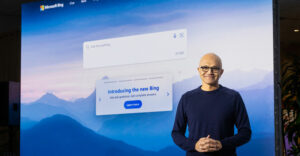
Google on Monday announced expansions to its search service that will provide real-time content to update search results.
Google also demonstrated Google Goggles, a visual search application that calls up information from Google’s databases when people take a photo of objects with their Android phones.
In addition, the Internet search giant announced partnerships with several prominent social networking sites.
Getting the News Now
The new real-time search capabilities provide the latest information to Google searchers. Immediately after they get their search results, Google will bring up live updates from people on popular sites such as Twitter and Facebook’s FriendFeed as well as headlines from news and blog posts that have just been published.
Searchers can customize their results, filtering them to restrict feeds to particular sites such as Twitter and FriendFeed, for example. The latest results and the new search options will be available on iPhones and Android phones as well as on PCs.
Google has added the “hot topics” label to Google Trends to indicate the most common topics people publish to the Web in real time. Baghdad, Tiger Woods and John Lennon were the top three hot topics in the United States on Tuesday morning, and searches about Tiger Woods constituted the top three hot searches in the U.S. The top 10 hot topics and hot searches are listed on the Google Trends page.
Getting to Friend You
Google also noted new partnerships with Facebook, MySpace, FriendFeed, Jaiku and Identi.ca on Monday. It struck up a partnership with Twitter some weeks ago.
These partnerships help Google enhance its real-time search features by letting the Internet giant’s search engine sift through their sites for the latest published information.
Its partnership with MySpace is noteworthy — the social networking site is part of Fox Interactive Media, a property of News Corp. The media conglomerate’s chairman, Rupert Murdoch, is currently in a staredown of sorts with the search leader’s news aggregator site, Google News.
What About the Dollars?
Will Google’s ability to pull in the latest, hottest news from all sources in real time impact advertisers? It’s too early to tell, Google spokesperson Jake Hubert told TechNewsWorld. “It’s possible that the integration of real-time information into Google will create new opportunities for advertisers,” he pointed out. Currently, Google is not showing ads on the latest results page, in either the “Updates” or “Latest” modes, Hubert said.
“I’m sure Google has taken the revenue potential into account,” Jim McGregor, chief technology strategist at In-Stat, told TechNewsWorld.
The real-time search capability could impact ad revenues at professional news sites, Rob Enderle, principal analyst at the Enderle Group, pointed out. “People will be spending more time on Google properties and increasingly clicking on ads that provide Google with revenue at the expense of the professional news sites,” he explained.
Crazier Than a Fox?
News Corp. Chairman Rupert Murdoch has been in a war of words with Google for the past few months. He has toyed with the idea of barring Google’s search engine from accessing news on his News Corp. sites, which include publications like The Wall Street Journal. The traffic Google News sends to News Corp. sites may not be as valuable as loyal, paying readers, he said. However, News Corp. sites still allow Google News to link to their stories, though all publications have the option to block the aggregator from bundling in their content.
Google’s expanded its search service to include real-time information in a bid to backstop any potential revenue loss should Murdoch or other publishers give Google the cold shoulder, Enderle contended. “It will allow a powerful aggregation of news, often from those summarizing News Corp.’s content,” he said. “It looks to me that it’s likely this will substantially reduce revenues going to News Corp. sites as a result.”
The move could also be a bid to head off any possible benefits of a News Corp./Microsoft Bing tie-in. Microsoft is reportedly talking with News Corp. and other publishers to exclusively aggregate their content the way Google does.
The Times They Are a-Changin’
Google has also introduced new features in mobile search. It now lets mobile device users search by voice, location and sight, in addition to text. It has also extended voice search capabilities on Android devices to recognize Japanese.
In terms of visual search, it gives users with devices running Android 1.6 or higher the ability to identify any item they photograph with the device’s camera. This uses the just-introduced Google Goggles feature.
Here’s how Google Goggles works: When an Android device user takes a photograph of an item, this triggers a search of Google’s image recognition databases and returns one or more results based on available metadata and ranking. Google Goggles is still under development.
“Computer vision technology is still in its infancy, making Google Goggles a Labs product,” Google’s Hubert explained. Google Labs is the company’s site for prototype and experimental applications. “The performance is not as great as search by text or voice.”
Google continues to work on improving its vision technology, Hubert said. “Our ultimate goal is to be able to recognize and provide relevant results for any image,” he said.




















































I enjoyed your analysis greatly. This is a bold, timely move from Google that is likely to lead to
a massive shake up in the entire search industry. Besides TipTop (http://feeltiptop.com) which offers a unique real-time social search experience that Google would not be able to replicate easily (unless they acquire them), I do not quite see how any other real-time search engine is going to survive after this. To see whos looking at who check out the real-time results for google goggles at http://feeltiptop.com/google%20goggles/